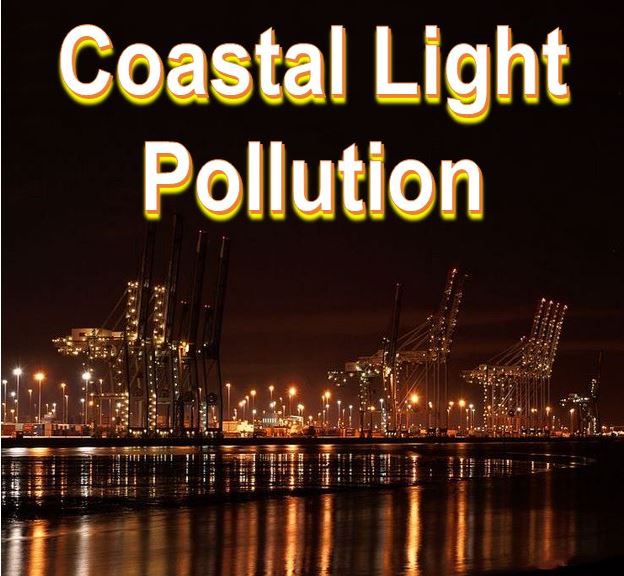Coastal light pollution – artificial lighting on the coast – not only changes marine ecosystems, but also attracts several species known to cause problems to ships, marinas, dockyards and aquaculture facilities, says a team of British researchers.
Scientists from the Universities of Bangor and Exeter in England, who published their findings in the Royal Society journal Biology Letters, found that light pollution from coastal communities, offshore infrastructure and shipping may be altering the composition of marine invertebrate communities.
Dr. Tom Davies and colleagues used a raft in the Menai Strait, a narrow stretch of shallow tidal water about 16 miles long which separates the island of Anglesey from the mainland of Wales, to monitor how artificial light might affect the settlement of marine invertebrates into new habitats.
Pollution exists in many forms. Light, airborne particulates, chemicals, noise, sewage, household/commercial waste, and construction debris, for example, are possible pollutants.

The larvae of marine invertebrates use light as an important cue when searching for suitable habitats to settle, grow and reproduce.
Artificial light attracts fouling invertebrates
The research team found that artificial light both encouraged and suppressed colonisation by a number of species common to British coasts, including (encouraging) keel worms and sea squirts.
These species, sometimes referred to as fouling invertebrates, are known to stick to man-made structures, causing problems in dockyards, marinas and aquaculture facilities.
The results suggest that light pollution – which is becoming a more common phenomenon in coastal environments – might be encouraging unwanted fouling in dockyards and marinas, while at the same time altering “the abundances of these species in the wider environment where they can provide important ecosystem services.”
What level of lighting is ‘safe’?
Dr. Davies, who works at the University of Exeter’s Environment and Sustainability Institute in Cornwall, said:
“We know that artificial light at night alters the behaviour of many marine animals but this is the first study to show that it can disrupt the development of ecological communities in the marine environment.”
“Further research is urgently needed to assess what level of light can be considered ‘safe’ so that legislation can be put in place to minimise future light pollution from new and existing developments.”
Dr. Stuart Jenkins, from Bangor University’s School of Ocean Sciences, said:
“This is an important first step in developing understanding of the way artificial light may be affecting marine coastal assemblages.”
“Our research showed that levels of artificial light, commonly found in urbanised and developed coastal areas, can have important effects on the development of communities inhabiting hard surfaces in shallow water.”
Dr. Katherine Griffith, who also works at the School of Ocean Sciences, added:
“With urbanisation on the increase, many coastal areas around the globe will become vulnerable to the effects of artificial light pollution. Therefore, further research on how artificial light may disrupt marine communities is vital if we are to mitigate these impacts.”
Citation
“Night-time lighting alters the composition of marine epifaunal communities,” Thomas W. Davies, Matthew Coleman, Katherine M. Griffith, Stuart R. Jenkins. Biology Letters. Published 29 April, 2015. DOI: 10.1098/rsbl.2015.008.
